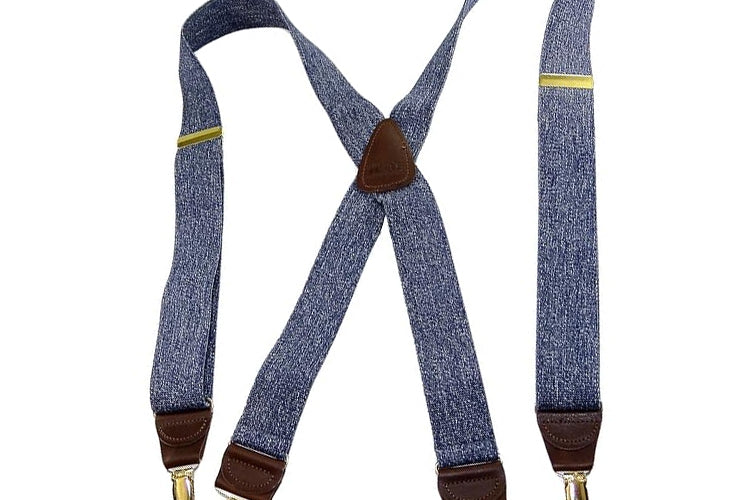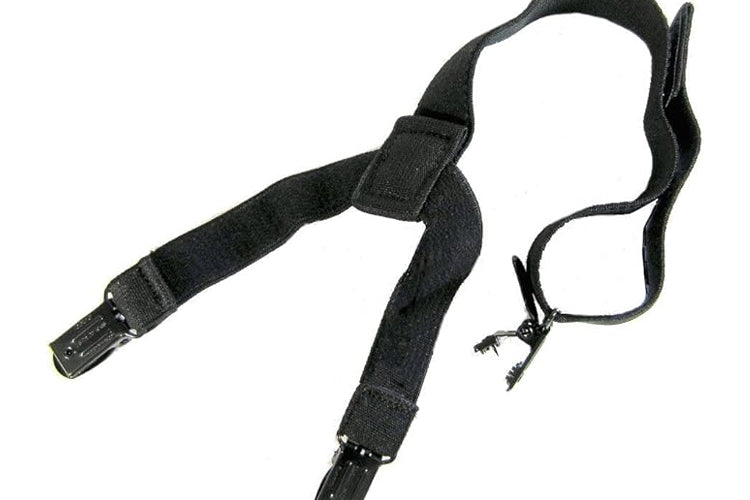When the cold season arrives, staying warm is more than a matter of comfort; it's about being able to play outside and keep your body safe from the harsh weather conditions. Whether you're going out for a hike, snowshoeing, skiing, or just taking in the winter, layering is the secret to staying warm and comfortable.
Layering helps you adapt your garments as you transition from one environment or level of physical activity to another, keeping you comfortable in your activities.
Elevate your winter style with Hold-Ups Red Snow Ski Suspenders for a snug, comfortable fit.

Why is Layering Important for Cold Weather?
Layering is flexible and adaptable, and it is crucial when participating in winter outdoor activities. By wearing several layers, you can adapt your clothing to your activity level and changing weather conditions. Proper layers trap warmth near the body, pull moisture away, and insulate you against the wind, rain, or snow. By understanding the purpose of each layer, you can tailor your clothing to meet the specific needs of your activity, avoiding overheating or chilling.
The Role of Suspenders for Cold Weather Activities
In layering for cold activities, suspenders for winter activities are crucial in keeping you comfortably fit. Suspenders help keep pants or outer garments stable without sagging, allowing for the comfort of movement while engaging in activities such as hiking or skiing. Suspenders also prevent belts from cutting into your waist and spreading out the weight of your gear, allowing you to maintain your activity without making perpetual adjustments. They are vital to guaranteeing everything remains firmly in place, particularly with bulkier layers.
How to Do Layering for Cold Weather Activities?
Layering for winter sports is more than simply piling clothes on top of one another. It's more about selecting the appropriate fabric and fit so that you're warm, dry, and comfortable on your adventures. The rule of thumb is the three-layer system: base layer, insulating layer, and outer layer.
Let's dissect these and learn how each plays a role for maximum warmth and protection.
1. Base Layer: The Key to Warmth
Your base layer is the most critical as it comes in direct contact with your skin. The function of the base layer is to draw moisture away from your body, thereby keeping you dry. Merino wool, polyester, or moisture-wicking synthetics are the best options because they draw sweat away from your skin, preventing you from getting chilly as the sweat evaporates.
When selecting your base layer, choose one that fits close but comfortably to exclude cold spots. When engaging in active cold-weather sports, a wicking base is essential for maintaining dryness and regulating body temperature. If you plan to spend a long time outdoors, consider choosing a thicker base layer for extra warmth.
2. Insulating Layer: Trapping Warmth
The insulating layer is what traps the warmth against your body. This layer consists of materials that trap body heat, like fleece, down, or synthetic insulation. The idea is to keep you warm even in cold temperatures outside. Fleece works well because it's light, breathable, and traps heat without being too heavy. On the other hand, down is excellent for extreme cold but can lose its insulating properties when wet.
If you’re expecting fluctuating temperatures or heavy winter adventure, choose an insulating layer that’s easily adjustable. For instance, a fleece jacket or a lightweight down vest provides warmth without overheating.
3. Outer Layer: Protection Against the Elements
The outer layer protects from wind, snow, rain, or any other outside factor that might affect your comfort. The outer layer must be windproof, waterproof, and breathable. A decent Gore-Tex or similar fabric jacket will keep you dry by allowing moisture to escape from the inside while keeping the outside elements out.
Aside from a jacket, wearing protective pants made of the same material is also advisable to protect your legs from the weather.
When participating in outdoor activities such as skiing or snowshoeing, be on the lookout for equipment that protects and enhances mobility. This outer gear should fit snugly over your insulating layer, but not too tightly, so you still have a full range of motion.
4. Don't Forget Your Accessories
Accessories play a crucial role in layering for cold weather. A good winter hat, gloves, and scarf can make all the difference in maintaining warmth and comfort. Hats should cover your ears and fit snugly without causing pressure. Gloves or mittens should allow for dexterity while still providing warmth. Opt for insulated materials for maximum warmth.
A scarf or a gaiter for the neck prevents your face and neck from the frosty winds. Additionally, wearing thermal socks and layering up your footwear can help keep your feet safe from cold temperatures.
Conclusion: Layer Up for Comfort and Performance
Layering is the secret to remaining comfortable in cold-weather activities and striking the balance between warmth, protection, and flexibility. With knowledge of layering, you can prepare for any outdoor adventure, whether skiing, hiking, or just a winter stroll. Keep in mind that the right base layer, insulating layer, and outer layer, combined with the ideal accessories and suspenders, will keep you warm and allow you to relish every moment outdoors in the cold.
Frequently Asked Questions
How do I know what fabrics to use when layering during cold weather?
Use moisture-wicking fabrics for the base layer (such as merino wool or polyester), insulating fabrics like fleece or down for heat, and waterproof, windproof materials for the outer layer.
Can I layer regular clothing for cold weather?
Use specialized layering clothing to provide effective moisture-wicking, insulation, and weather protection. Cotton clothing can get wet and make you feel colder.
How do suspenders facilitate cold-weather layering?
Suspenders prevent your pants and outerwear from slipping down, causing discomfort, and allow for greater mobility during activities. They evenly distribute weight so you don't feel restricted.
Can layering overheat me in cold weather?
Yes, but that is why layering works. You can shed or change layers according to how active you are to control your body temperature.





